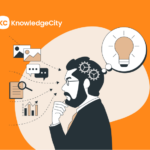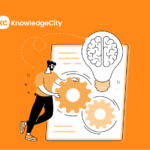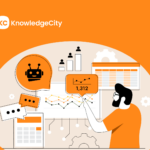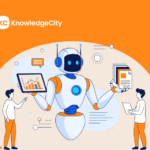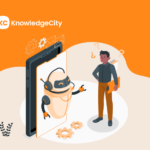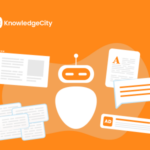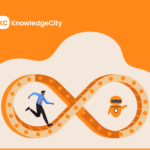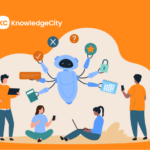Leadership is no longer defined by a single strength. In the past, organizations could promote leaders based primarily on technical expertise or managerial experience. Today, expectations are more complex. Leaders must navigate fast-changing technology while also creating workplaces where employees feel understood, respected, and motivated. Excelling in one area but neglecting the other is no longer sustainable.
This is why the intersection of emotional intelligence (EI) and artificial intelligence (AI) readiness has become the cornerstone of modern leadership. Emotional intelligence grounds leadership in human connection, while AI readiness ensures leaders make informed, timely, and forward-looking decisions. When combined, they define what it means to lead with both wisdom and credibility.
For HR and L&D leaders, the task is to design programs that help executives strengthen both dimensions simultaneously.
In this blog, we will explore why EI remains foundational, why AI readiness is now essential, and how organizations can integrate the two into leadership development strategies.
Why Emotional Intelligence Is a Leadership Essential
Emotional intelligence is often misunderstood as a “soft” skill, but in practice, it is what shapes the hardest aspects of leadership: decision-making, conflict resolution, and trust-building. Leaders who can recognize, interpret, and respond to emotions consistently outperform those who treat leadership as purely transactional.
Where EI Makes the Biggest Difference
- Decision-making with impact: Leaders regularly make calls that affect employee roles, workloads, and careers. EI ensures these decisions are communicated with sensitivity, preventing disengagement and building alignment.
- Conflict resolution: Workplace disagreements are unavoidable. Leaders with strong EI defuse tension, uncover deeper issues, and create constructive outcomes that protect team cohesion.
- Motivation and trust: Employees work harder when they feel valued. EI enables leaders to show fairness, provide recognition, and sustain commitment even during challenging periods.
- Leading diverse teams: In global and multigenerational workplaces, EI allows leaders to respect differences while uniting people around common goals.
How Organizations Can Build EI Effectively
To make EI development tangible, HR and L&D teams can:
- Use simulated scenarios that mirror workplace challenges, such as handling conflict or delivering tough feedback.
- Incorporate reflection and coaching so leaders can recognize their own emotional triggers and patterns.
- Apply ongoing feedback loops through 360-degree reviews and team engagement surveys to track progress over time.
Emotional intelligence prepares leaders to manage the human side of work. However, in today’s environment, being empathetic and trustworthy is only part of the equation. Leaders also need the ability to navigate a world where algorithms and automation shape key decisions.
Why AI Readiness Can’t Be Ignored in Leadership
Artificial intelligence is becoming a central feature of business strategy, affecting everything from hiring to forecasting. Leaders do not need to become data scientists, but they do need enough literacy to understand how AI works, where it adds value, and where it creates risks. Without this readiness, leaders may either misuse AI or miss opportunities altogether.
Where AI Readiness Matters Most
- Strategic planning: AI can forecast customer trends and resource needs. Leaders must judge when to trust these predictions and when to challenge them.
- Talent management: Recruitment and performance tools increasingly rely on AI. Leaders must question whether these systems reinforce existing biases.
- Operational efficiency: Automation can free employees from repetitive work, but leaders must balance efficiency with workforce well-being.
Skills Leaders Need for AI Literacy
How Organizations Can Build AI Readiness
Effective programs move beyond technical overviews and immerse leaders in decision-making scenarios, such as:
- Reviewing AI-driven case studies to determine reliability and fairness.
- Simulating strategic decisions where AI outputs must be balanced with team input.
- Using assessments that test how well leaders integrate AI into real-world problem-solving.
AI literacy adds analytical sharpness and confidence, but without emotional intelligence to guide how insights are applied, leaders risk alienating the very teams they seek to inspire.
The Risk of Focusing on Only One Side
When organizations emphasize only one side of this equation, they create unbalanced leaders. A leader rich in empathy but lacking technological fluency may fall behind competitors. Conversely, a leader skilled in AI but poor in people skills may make efficient yet demoralizing choices. Both paths carry long-term consequences.
| Focus Area | Key Strengths | Risks if Developed Alone |
| Emotional intelligence | Builds trust, collaboration, and cultural sensitivity | Struggles to leverage data; slower or less precise decision-making |
| AI readiness | Enhances efficiency, analysis, and innovation | Overreliance on automation; weaker human connection; reduced trust and retention |
This imbalance highlights why leadership development cannot treat EI and AI as separate competencies. The real value emerges when leaders are trained to use both in tandem.
Integrating EI and AI Training for Leadership Impact
Bringing these two skill sets together requires programs that show leaders how empathy and analytics reinforce each other. Treating them as complementary, not competing, makes leadership training far more impactful.
Approaches That Work
- Blended modules: Pair EI simulations like active listening exercises with sessions where leaders interpret AI-driven data on employee engagement. This shows how empathy and analysis go hand in hand.
- Scenario-based learning: For instance, when AI highlights a dip in productivity, leaders must assess the reliability of the insight, ask critical questions, and communicate findings to the team in a way that avoids fear or distrust.
- Coaching support: Coaches can help leaders reflect on how they balance empathy with technology in day-to-day decisions.
- Measurement frameworks:
- EI progress: 360-degree feedback, employee engagement, and retention data.
- AI progress: Demonstrated ability to critique AI outputs, apply them responsibly, and integrate them into strategy.
Programs designed this way don’t just teach concepts. They help leaders practice how to combine both skills when facing real challenges, developing the confidence to lead with both clarity and compassion.
How KnowledgeCity Helps You Build Leaders Ready for Both EI and AI
At KnowledgeCity, we know that modern leaders need both emotional intelligence and AI readiness to succeed. Our AI-powered LMS identifies skill gaps through a smart Training Needs Analysis and recommends the most relevant training from our library of over 50,000 premium, expertly developed training videos. This approach ensures leaders build the empathy, judgment, and analytical skills necessary to navigate complex human and technological challenges. By combining targeted learning with practical application, KnowledgeCity helps organizations create leaders who are confident, adaptable, and fully equipped to drive lasting impact across their teams and businesses.
Subscribe to Our Newsletter
Join 80,000+ Fellow HR Professionals. Get expert recruiting and training tips straight
to your inbox, and become a better HR manager.


 KnowledgeCity
KnowledgeCity 
